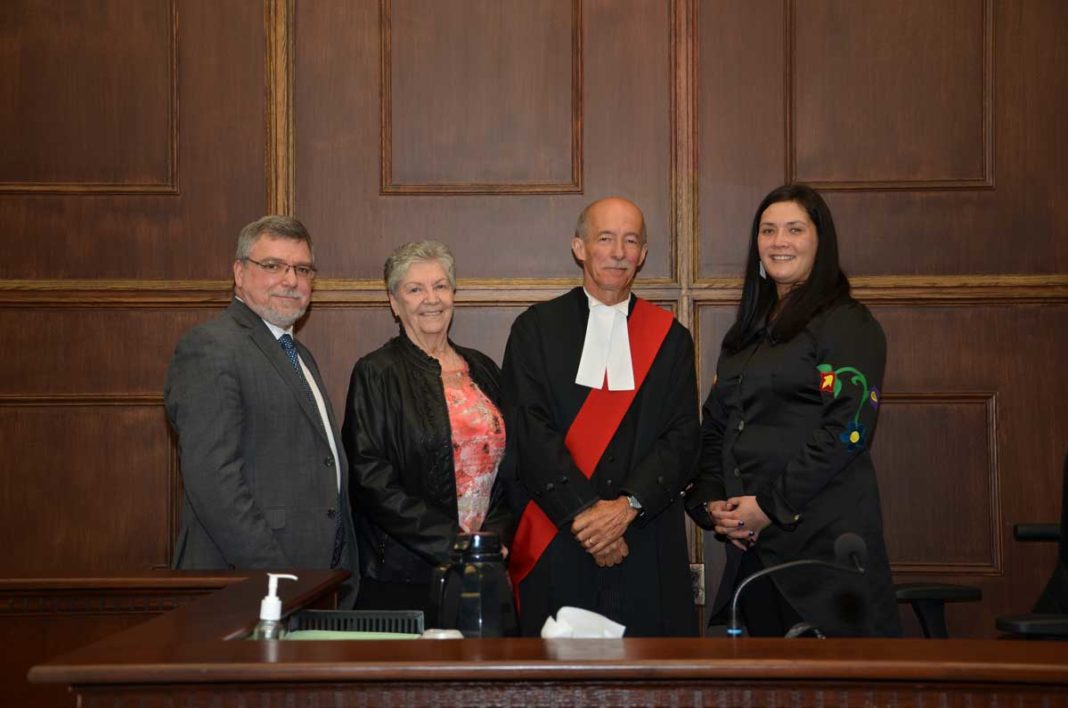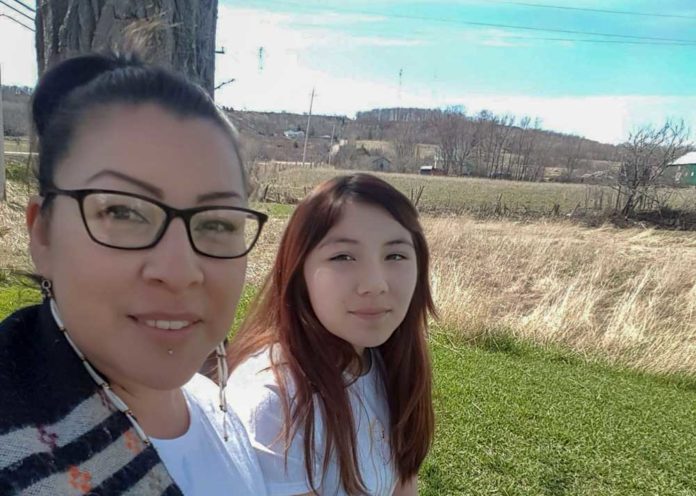M’CHIGEENG—Indian residential schools were established by Canada to assimilate Indigenous children and adolescents into European culture, to take the ‘Indian out of the child,’ a First Nation trustee with the Rainbow District School Board (RDSB) stated in a presentation last week.
“I have the honour of sharing words prepared for tonight, that many people contributed towards,” said Trustee Linda Debassige, who is also chief of M’Chigeeng First Nation, at a meeting last week. “The last week and a half has been very sombre with the finding of 215 First Nation children’s unmarked graves at a residential school in British olumbia.”
“Flags are flying at half-mast at all Rainbow schools and facilities in memory and honour of the 215 First Nations children buried in unmarked graves at the Kamloops Indian Residential School in British Columbia,” said Trustee Debassige.
“First Nations leaders, residential school survivors and their families have stated for many years that these graves existed,” said Trustee Debassige. “The devastating discovery has now confirmed their statements and has now provided the long-awaited proof.”
“We must not only acknowledge, but we must atone for this darkest chapter in Canadian history,” stated Trustee Debassige. She explained, “residential schools were established with one purpose in mind, not to educate, not to protect, not to preserve, but to intentionally and systematically assimilate Indigenous children and adolescents into European culture, ‘to take the Indian out of child’ and to remove and isolate children from their influence of their home, families, traditions, languages and culture, all based on racist assumptions that First Nations cultures were inferior.”
“Children and adolescents were brazenly and forcibly removed from their homes, ripped from the arms of their loving families and taken to residential schools far away from their home,” continued Trustee Debassige. The children were not allowed to be raised by their mothers and fathers, with their siblings and loving support from grandparents, aunts, uncles, cousins, elders or their community. “Imagine you not being allowed to raise your children?”
They were not allowed to speak their language, practice their culture, dress in their own clothes or wear their hair as they chose. “They were not allowed to be who they were. They were deliberately and recklessly robbed of the joys of childhood and adolescence, and their right to grow up with family, to play, to learn and practice their teachings and language. They were robbed of their way of life enjoyed by their ancestors,” Trustee Debassige continued. “Worse yet, children suffered abuse at the hands of the adults who were responsible for caring for them, for protecting them, for keeping them safe. They were physically and sexually assaulted. They were malnourished and neglected. They died of disease. They died of broken hearts. They died alone. They were murdered.”
“And now we know that these children were in fact discarded in mass graves, nameless, never to be returned to their families and their communities for a proper, respectful burial. The indignities to their fragile and helpless little bodies cannot be ignored,” stated Trustee Debassige. She pointed out the cycle repeated itself for several generations.
More than 150,000 Indigenous children were placed in residential schools between 1863 and 1998, 135 years. “This is not the distant past. This was happening less than 25 years ago,” Trustee Debassige added.
“More than 4,100 deaths in school have been documented by the Truth and Reconciliation Commission’s missing children’s project, but the total number could be more, maybe many more, possible as high as 20,000, according to commission leader Murray Sinclair. This does not include the babies born at residential schools who were cremated shortly after birth or drowned at nearby lakes,” said Trustee Debassige.
“No parent sends their child to school to die,” stated Trustee Debassige. “But then again, First Nations parents did not send their children anywhere. First Nation parents and families had no choice in this matter, they were forced.”
Trustee Debassige said in her presentation to the board that residential schools were not schools. They were institutions that committed what has since been described as an act of cultural genocide, crimes against humanity.
And the inter-generational trauma created by these institutions continues to this day. “It is manifested in high rates of suicide, incarceration, foster care and homelessness,” said Trustee Debassige, who said it is reflected in lower graduation rates among First Nation students.
“It is the sad outcome of what our government leaders and policymakers of the day chose to do to First Nations people in this country, over and over and over again,” continued Trustee Debassige. “We must build our knowledge of what happened then in order to build our understanding of what is happening now. We cannot ignore or cover up the truth found in the darkest chapter of Canadian history.”
“Most importantly, we must recommit to being part of the solution,” said Trustee Debassige who added, “this shared history affects all of us.”
Trustee Debassige said teachers and administrators “must be mindful of how this latest discovery has impacted First Nations communities, our students and their families. With guidance from First Nations peoples and communities, our board, our staff, our educators and our allies must continue to be intentional with our work surrounding residential schools as we join together to seek understanding, acknowledge the truth, and recommit to meaningful consultation.”
“Let us join together with our First Nations communities. We remember and honour the missing children. We apologize for the atrocities suffered. We recommit to uncovering the truth so we can build toward meaningful reconciliation.”
The board trustees all joined fellow Trustee Debassige in a moment of silence for the 215 children.
RDSB chair Doreen Dewar noted that flags at all Rainbow schools and facilities would remain at half-staff for the remainder of the week.





